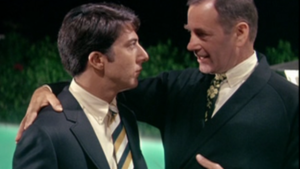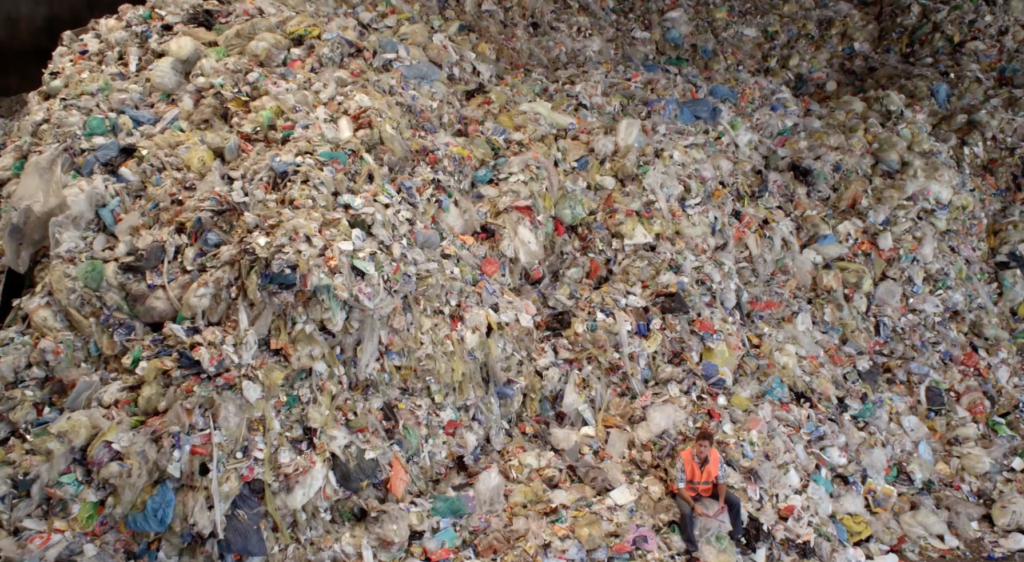
Dr. David Klement
DAVID KLEMENT is the executive director of St. Petersburg College’s Institute for Strategic Policy Solutions, which is dedicated to advancing academic excellence, community engagement, civics literacy and public understanding through strategic partnerships and solutions-directed programs.
On April 26, the Institute for Strategic Policy Solutions will sponsor a screening of “A Plastic Ocean,” a documentary film that captures in shocking detail the pollution of the world’s oceans by plastic – that ubiquitous material that seems to dominate modern life and never goes away. The event is free, but advance registration is requested at http://solutions.spcollege.edu/. It will be from 6:30 to 8:30 p.m. at the Digitorium on the Seminole Campus of St. Petersburg College, 9200 113th St. N.
Reflecting on that plastic pollution reminded me of the 1967 movie “The Graduate,” which starred a young Dustin Hoffman. To me, the most memorable dialogue in the movie was not in the iconic seduction scene, where Mrs. Robinson and Benjamin (played by Hoffman) engage in some hot-and-heavy banter about . . .you know. . .

Just one word …
No, it’s the scene where Benjamin is getting some career advice from Mr. McGuire, a business acquaintance of the young man’s father. Here’s the scene:
Mr. McGuire: I want to say one word to you. Just one word.
Benjamin: Yes, sir.
Mr. McGuire: Are you listening?
Benjamin: Yes, I am.
Mr. McGuire: Plastics.
Benjamin: Exactly how do you mean?
Mr. McGuire: There’s a great future in plastics. Think about it. Will you think about it?
Plastics! That one line says it all about our naivete’ toward the seemingly miracle synthetic polymer material that became wildly popular in the 1960s. There seemed to be no end to the uses to which plastic could be put to make our lives better in that innocent era. Hence, Mr. McGuire’s view of that as a promising career for a recent college graduate.
Suddenly, Plastic Was Everywhere
We glommed onto each new adaptation of plastic: Tupperware, furniture, drink cartons, toys, playground equipment, signs, water and sewer pipes, flooring, ropes, writing pens, drinking straws. Eventually the water bottle. And finally, inevitably, grocery bags.

Craig Leeson dwarfed by a mountain of plastic waste, in a scene from “A Plastic Ocean.”
And today, we are drowning in plastic. It is stuffing our landfills. It is littering our landscape, wherever we look. It is flying through the air before it gets stuck in trees.
And it is poisoning our oceans, and the creatures that live in them.
Especially the latter. For the seafood we consume is increasingly saturated with toxins from microscopic plastic particles they absorb from vast tracts of plastic waste swirling in all of the planet’s oceans. The largest, known as the Great Pacific Garbage Patch, is bigger than the state of Texas. Or four Californias. It is four to 16 times larger than previous estimates.
But contrary to popular myth, it is not a floating island of trash that a person might try to walk on. It’s a mishmash of floating debris covering 1.6 million square kilometers, some of which is breaking down into those micro-plastic particles that get eaten by fish and then by us. A study by Scientific Reports released March 22 estimated it to contain 1.8 trillion pieces of plastic, or 79,000 metric tons.
Not All Consumer Goods, But Enough
The somewhat encouraging news for consumers is that most of that plastic debris is abandoned fishing gear—not plastic bottles or grocery bags that are under widespread attack today.The study also found that fishing nets account for 46 percent of the trash, with the majority of the rest composed of other fishing industry gear. Scientists estimate that 20 percent of the debris is from the 2011 Japanese tsunami.
But there’s no denying that plastics from consumer goods are part of the mishmash. All one needs to do is look at the trash fished out of streams and bays on beach-clean-up days.to get an idea of the plastic waste that winds up in the oceans. At a recent clean-up sponsored by Keep Pinellas Beautiful, SPC students from the STEM Center on Boca Ceiga Bay collected 3,285 pounds of trash, including water bottles, foam coolers, beach toys, lighters, hats, beach floats, straws and aluminum scrap from derelict boats.
And it’s not going to get better soon, unless we change our ways. National Geographic reported that publication of the Garbage Patch study coincided with a new report from Britain, “Foresight Future of the Sea.” This report found plastic pollution in the ocean could triple by 2050 unless a “major response” is mounted to prevent plastic from reaching the ocean. The report declared plastic pollution to be one of the main environmental threats to the seas, along with sea-level rise and warming oceans. To read the National Geographic report, click here.
If Benjamin were still around today, what one word might Mr. McGuire have for him?
Recycle.

Trackback: เว็บบาคาร่า ไม่มีขั้นต่ำ ยอดนิยม ที่เชื่อถือได้ ต้อง LSM99